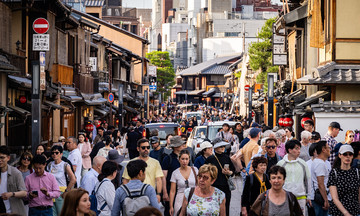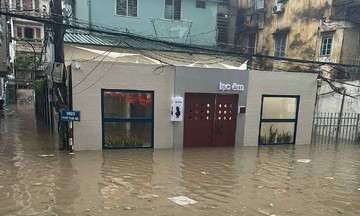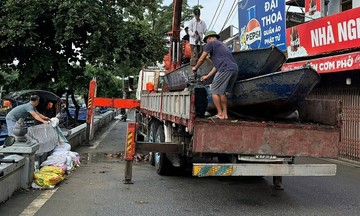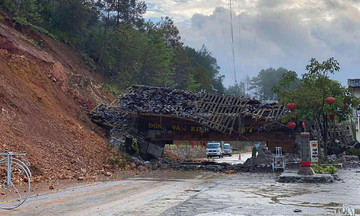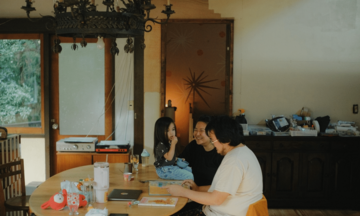Ky, an Australian tourist, vividly remembers the first time he heard this call while staying at a hotel in Ho Chi Minh City. "Even on a high floor, I could clearly hear the sound echoing from the street below, which made me very curious," he said. From then on, Ky started to notice the call everywhere.
Loving Vietnam, Ky and his partner moved to Da Nang last April. Passionate about exploring Vietnamese culture and cuisine, he was surprised when he first tried 'banh bao' (steamed buns) from a street vendor. "The rich flavor was better than I imagined," he remarked, comparing it to meat pies, a popular snack in Australia.
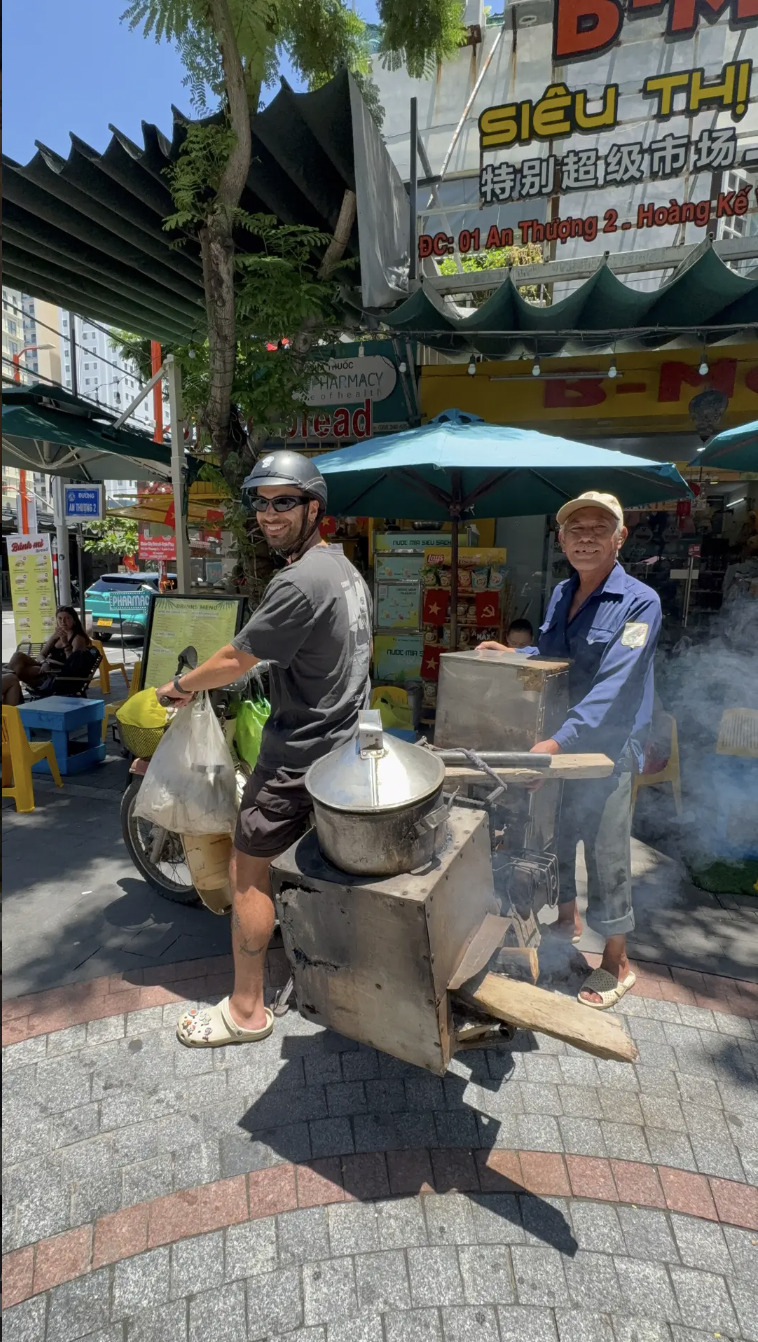 |
Ky poses with a hot 'banh bao' cart in Da Nang. Photo: NVCC |
Ky explained that street vendor culture isn't common in Australia, where vendors mostly work in shops. "Therefore, the 'banh bao' call is one of the unique symbols of Vietnam," he said. What impressed Ky most was seeing a 'banh bao' vendor navigating flooded streets during a heavy downpour in Da Nang. He was both surprised and admired their diligence.
Ky's social media posts about his experience "hunting" for the 'banh bao' call received positive feedback.
"It seems that anyone who has been to Vietnam has heard the 'banh bao' call and finds it interesting to recall," Ky said.
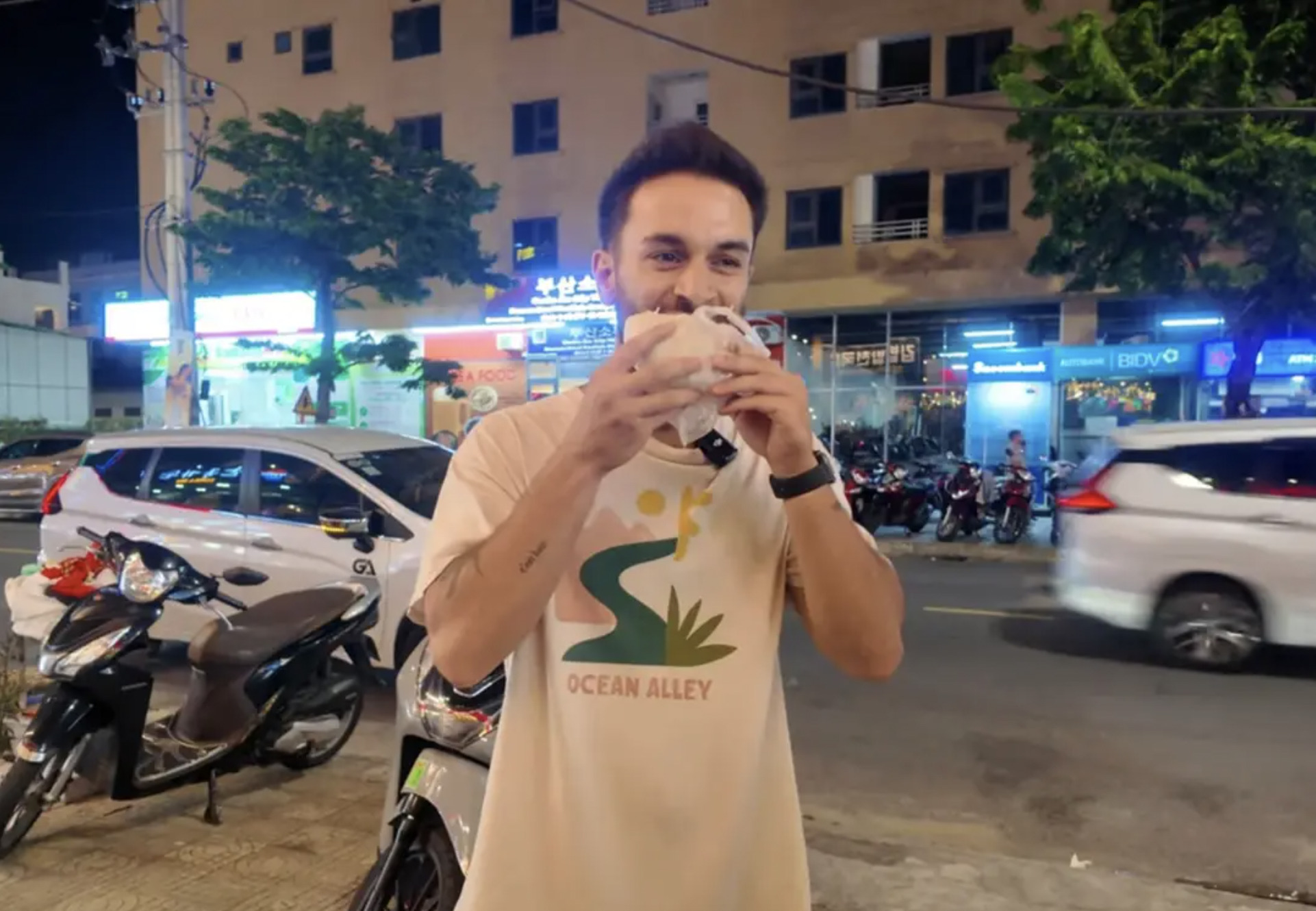 |
Ky enjoys 'banh bao' after successfully "hunting" the call in the evening. Photo: NVCC |
Mae, a tourist from the Philippines, was also captivated by this distinctive sound. Before her trip to Vietnam, she watched numerous videos on social media featuring the "hot 'banh bao' here" call, mostly geo-tagged in Da Nang. Arriving in the coastal city in July, Mae was determined to find it.
Following a friend's suggestion, she woke up at 5 a.m. to stroll along My Khe beach and quickly encountered a man selling 'banh bao' from a motorbike equipped with a loudspeaker broadcasting the call.
"Initially, I didn't understand because it was in the local language. After my guide explained, I realized it was an invitation to buy hot steamed buns, a popular dish in Vietnam," Mae recounted.
She filmed her experience and posted the video on TikTok, receiving nearly 70,000 interactions. Many foreigners were curious, and some who had visited Vietnam expressed their delight at having heard it before.
Impressed not only by the sound, Mae also praised the delicious and affordable food. The hot 'banh bao', filled with meat, egg, and wood ear mushrooms, encased in a soft, fragrant shell, cost 15,000 VND, enough for breakfast. She was further surprised by how the vendor arranged the stove, steamer, and bun cabinet on a single motorbike.
"I think this is a street culture unique to Vietnam," Mae said.
On TikTok, searching for "banhbao" yields hundreds of videos with high engagement, many reaching nearly a million views, all associated with the characteristic call.
Cultural researcher, Dr. Nguyen Anh Hong, from the Academy of Journalism and Communication, believes the appeal of street vendor calls stems from the unique tonality of the Vietnamese language, its rich melody making the calls sound like songs. The melody not only impacts hearing but also evokes emotions.
What sets these calls apart is their presence amidst the bustling urban landscape, whether during the city's daytime rush or its quiet nights. The sound creates a moment of balance, evoking images of hardworking individuals striving to make a living. This explains why many find the rhythmic repetition "haunting."
According to Dr. Anh Hong, street vendor calls are a cultural expression of lifestyle. Their disappearance would render the urban environment sterile, severing a bridge connecting the past, present, and future.
Japan once had similar familiar urban calls, like those of fishmongers in the morning, street vendors selling "yaki-imo" (baked sweet potatoes), or the sounds of knife sharpening and pot mending. These sounds gradually vanished from the 1960s-1970s with the rise of supermarkets, convenience stores, and noise regulations. The Japanese call this "the disappearance of townspeople's sounds."
Today, only a few calls are preserved on a small scale, such as the wooden clapper of tofu sellers in the early mornings of Kyoto or the reenactment of street vendor scenes at summer festivals in Osaka to evoke memories. Numerous sound museums and projects, like the Japanese Art Sound Archive (2025), archive artistic and urban sounds, including recordings from the past, to recreate and educate about this vanishing urban cultural heritage.
"The difference in Vietnam is that these calls remain closely tied to daily life, especially in residential areas. Each call is a creative expression, with its own musicality and style, which tourists find fascinating," Ms. Hong added.
Hanoi has seen much debate about whether to preserve or eliminate street vendors, including familiar calls like "hot 'banh bao' here" and "sticky rice with peanuts, 'banh khuc' here". Many experts argue that sustainable tourism development requires not only focusing on major attractions but also preserving and celebrating small details of daily life, as these offer the most intimate connection with visitors.
Cultural expert Anh Hong believes these calls can become a "spiritual specialty," enriching the tourist experience. However, this must be accompanied by civilized behavior, avoiding scams or actions that create negative impressions on visitors.
"Building a national cultural image doesn't require grand gestures. Sometimes, it's the small, simple things that create the most positive promotional impact," Ms. Hong emphasized.
Bich Phuong




